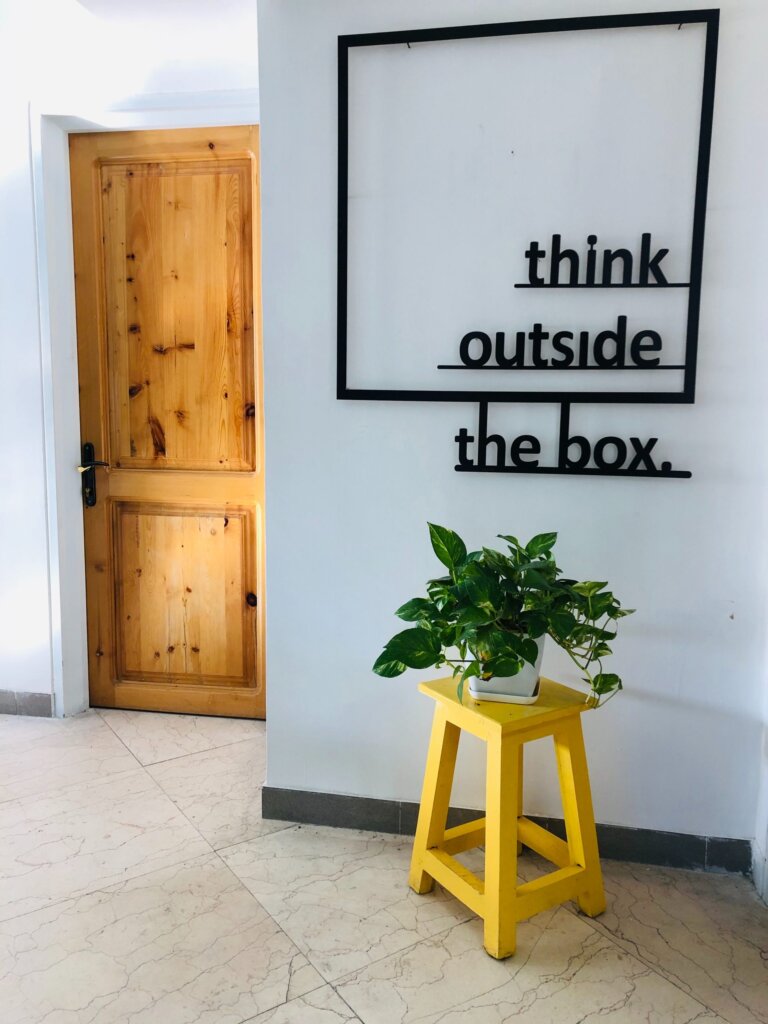Connecting Visually: How to Communicate More Effectively Without Changing What You Say

This blog post has been adapted from Dr. John Maxwell’s communication resource, Everyone Communicates, Few Connect. John Maxwell has been one of the world’s foremost communication experts for more than 40 years, and this guidebook for relational and presentational connection contains invaluable insights. You can pick up a copy here.
“As a species, we remember 85 to 90 percent of what we see, but less than 15 percent of what we hear.”
Communications expert Sonya Hamlin shared this surprising statistic in her book, How to Talk So People Listen. She claims that, as a society, we have spent the last several years becoming more and more visual in our learning, and that if we want to communicate effectively, we must take that into account.
“If you want me to learn and remember, you must also support your words by showing your ideas to me… you now need to use the power of the visual to help sustain your audience’s interest and bring it to new levels of understanding.”
Let Your Audience See What You Say
Anytime you are in front of other people to communicate – whether it’s on a stage, in a boardroom, on a ball field, or across a coffee table – the visual impression you make will either help or hinder you. Television executive, communication consultant, and author Roger Ailes wrote in Success magazine:
You’ve got just seven seconds to make the right first impression. As soon as you make your entrance, you broadcast verbal and nonverbal signals that determine how others see you. In business, those crucial first seven seconds can decide whether you will win that new account, or succeed in a tense negotiation.
If you want to increase your ability to connect with people visually, then take to heart the following advice:
1. ELIMINATE PERSONAL DISTRACTIONS.
The first place to start when connecting visually is to increase the chances that people are paying attention to the right things and not being distracted. If you’re well-groomed and wearing the right clothing for your situation, then that’s a good start.
It’s also wise to eliminate any distracting personal habits or tics. Ask family and friends if you regularly display behaviors that capture their attention and take their focus off of what you communicate. And if you do any kind of public speaking, one of the best things you can do is capture yourself on video – the tape doesn’t lie!
2. EXPAND YOUR RANGE OF EXPRESSION.
Great actors can tell an entire story without uttering a word, simply by using facial expressions. And whether we are aware of it or not, we also convey messages with the expressions on our faces. Even people who take pride in wearing a poker face and who work hard not to let others know what they’re thinking are conveying a message to others – detachment. And that makes connecting with others nearly impossible. If your face is going to “talk” for you anyway, you might as well have it communicate something positive.
No matter who you are or with whom you are trying to communicate, you can improve your ability by smiling at people and being expressive. Even if you work in a tough environment or a staid corporate culture, you don’t have to maintain a grim visage all the time.
3. MOVE WITH A SENSE OF PURPOSE.
Isn’t it true that our perception of people differs based on how they carry themselves? One person garners attention while another gets ignored. One person commands respect while another doesn’t. It’s been said that pickpockets choose their victims based on body language – if somebody walks briskly, confidently, and alertly, criminals will often let them pass and look for another victim – someone lacking confidence and awareness.
Movement always conveys a clear message when someone desires to communicate.
4. MAINTAIN AN OPEN POSTURE.
Physical barriers are often some of the greatest hindrances to connection for someone trying to communicate. Anytime you remove obstacles – like physical boundaries – connection becomes easier. And physical touch eliminates distance altogether. A handshake, a pat on the back, or a hug can do a lot to promote connection.
Singer/songwriter Sue Duffield once told a story about her father that illustrates the power of touch and how it can help people connect:
I will never forget my dad’s hands. He was a hardworking, blue-collar worker who abused his hands daily – yet somehow maintaining them to be immaculately manicured, tan, and perfect… [One day] while I lay bruised and injured on a stretcher in an emergency room following a front-end collision, this seventeen-year-old was a complete wreck until I felt my dad’s hand touch my shoulder. I knew immediately who it was without turning around. I felt his power, his sense of touch – a familiar calming and an instant connection that said, “It’s OK.”
Do whatever you can to remove obstacles and close the gap between yourself and the person with whom you want to connect. And whenever it’s appropriate, use touch to communicate that you care.
5. PAY ATTENTION TO YOUR SURROUNDINGS.
Environment obviously plays an important role whenever we try to communicate with other people. Have you ever tried to connect with someone who’s paying more attention to their phone than you? Have you tried to have a conversation in a loud place like a construction zone or a concert? A difficult environment can make it hard or even impossible to connect.
If you want to communicate clearly and effectively, you need to be willing to make adjustments to your atmosphere. If you’re trying to connect at home with your spouse, turn off the television. If you’re planning to have lunch with a colleague or client, pick someplace quiet enough for you to carry on a conversation. If you’re in charge of a meeting or small group, pick the right room and make sure the setup works for everyone to be able to connect. And if you’re preparing to speak to an audience, check the venue to remove obstacles to connection. To connect at your best, take responsibility for giving others the best chance to connect with you visually.
Are you looking for more tools of effective communication?
At Maxwell Leadership, our heart is personal growth and development. It is so much part of our DNA that at our twice-annual event, the International Maxwell Conference, we have an entire day dedicated to personal growth – and we’d like to invite you to join.
On March 13, 2023, join Dr. John C. Maxwell and his panel of personal growth experts – including NFL head coach Sean McDermott! – at the Marriott World Center in Orlando, Florida (or remotely!) for an entire day of growth and development training. Not only will you connect with other professionals passionate about achieving their full potential, but you’ll also go home equipped with an intentional action plan to begin putting in place same-day.
You can register for Personal Growth Day here – we would love to grow with you!
More Articles

Do I Believe The Best In Others?

BIG ANNOUNCEMENT!









Be the first to comment on "Connecting Visually: How to Communicate More Effectively Without Changing What You Say"